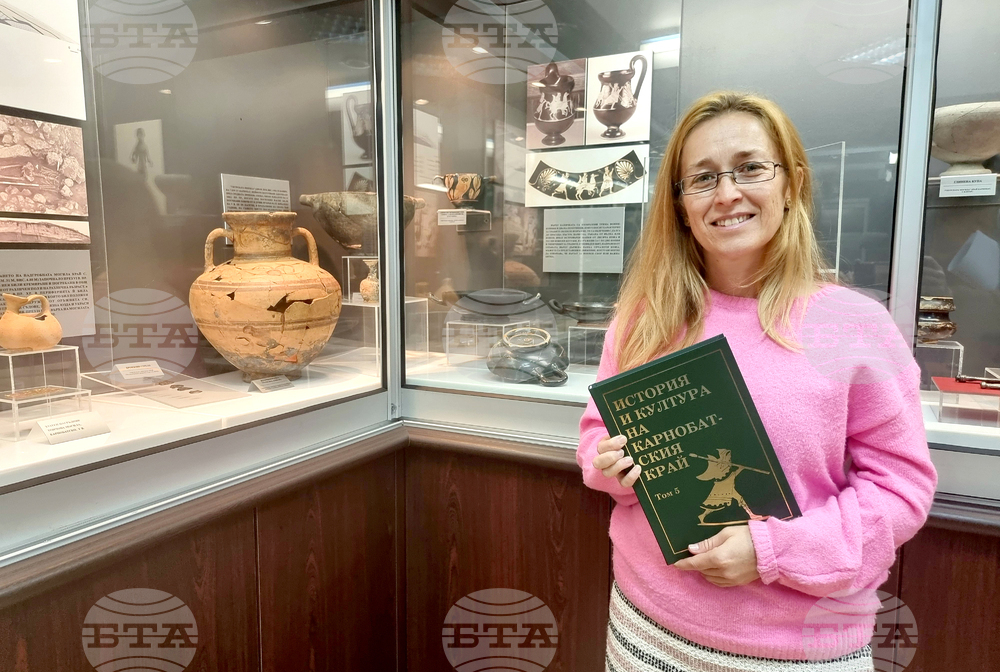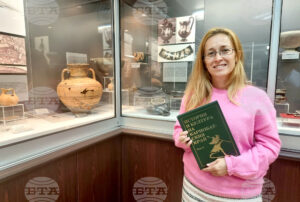
Karnobat History Museum to Present Its Most Valuable Exhibit in US
Karnobat History Museum: A Gateway to the Past
Karnobat, a town in Bulgaria, is known for its rich cultural heritage and historical significance. The Karnobat History Museum stands as a testament to this legacy, housing an array of artifacts and exhibits that narrate the town’s evolution from ancient times to the modern era. Among its many treasures, one exhibit is particularly noteworthy, as it is set to travel to the United States, allowing a broader audience to appreciate the historical narratives of this lesser-known Bulgarian town.
The Origins of the Karnobat History Museum
Established in the mid-20th century, the Karnobat History Museum has served as a vital institution for preserving the local history and culture of Karnobat and its surrounding regions. The museum’s collections include archaeological finds, ethnographic artifacts, and documents that chronicle the life and traditions of the local population. The museum aims to educate visitors about the historical milestones that have shaped Karnobat, from its founding in antiquity to its role in contemporary Bulgaria.
The Museum’s Collections
The museum’s diverse collection is categorized into several key areas:
1. Archaeological Artifacts: The museum boasts a rich assortment of artifacts from various historical periods, including the Thracian, Roman, and Byzantine eras. Notable items include pottery, tools, and jewelry that provide insight into the daily lives, craftsmanship, and burial practices of ancient civilizations.
2. Ethnographic Exhibits: This section showcases the traditional crafts, clothing, and customs of the local population. Items such as handmade textiles, agricultural tools, and domestic utensils illustrate the rural lifestyle and cultural practices that have persisted over generations.
3. Historical Documents: The museum houses a collection of documents that trace the administrative, social, and economic developments of Karnobat through the centuries. These documents are invaluable for researchers and historians, shedding light on the town’s governance and its role within broader national narratives.
The Highlight Exhibit: A Cultural Ambassador
Among the museum’s extensive collection, one exhibit has garnered special attention: a meticulously preserved Thracian gold necklace. Dating back to the 4th century BC, this exquisite piece is not only a stunning example of ancient craftsmanship but also a representation of the rich history of the Thracian civilization, known for its advanced metallurgy and artistic expression.
The decision to present this necklace in the United States is a strategic move aimed at fostering cultural exchange and enhancing international appreciation for Bulgarian heritage. The exhibit will tour several prominent museums in the U.S., allowing visitors to engage with this extraordinary artifact and learn about the Thracians, who once inhabited the region around Karnobat.
Significance of the Necklace
The Thracian gold necklace is significant for several reasons:
1. Artistic Mastery: The craftsmanship displayed in the necklace exemplifies the high level of skill achieved by Thracian artisans. Its intricate design and use of gold highlight the aesthetic values and technological advancements of the period.
2. Cultural Heritage: This artifact serves as a symbol of the Thracian cultural identity. By showcasing it in the U.S., the museum aims to educate audiences about the Thracians’ influence on Bulgarian history and their contributions to European civilization.
3. Educational Opportunities: The traveling exhibit is expected to include interactive components, such as educational programs and workshops, to engage visitors and deepen their understanding of Thracian culture and history. This approach aims to create a dialogue between the past and present, fostering a sense of shared heritage.
Collaborative Efforts
To facilitate the exhibit’s success, the Karnobat History Museum has partnered with several American institutions, including universities and museums specializing in ancient history and archaeology. These collaborations not only enhance the exhibit’s credibility but also provide resources for research and outreach programs.
Moreover, the museum has worked diligently to create promotional materials, including brochures and digital content, that will accompany the necklace during its tour. These materials will provide context, historical background, and insight into the significance of the artifact, ensuring that visitors leave with a richer understanding of Karnobat’s history.
Challenges and Opportunities
While the prospect of showcasing the necklace in the U.S. presents exciting opportunities, it also poses certain challenges. Transporting such a valuable artifact requires meticulous planning and coordination to ensure its safety. Insurance, security measures, and conservation efforts are critical to preserving the necklace during its journey.
Additionally, the museum faces the challenge of effectively communicating the historical narratives associated with the necklace to an audience that may be unfamiliar with Bulgarian history. To address this, the museum plans to engage local historians and educators to lead discussions and lectures during the exhibit’s run, bridging cultural gaps and fostering greater appreciation for Bulgaria’s heritage.
Impact on Karnobat
The exhibition of the Thracian necklace is expected to have a significant impact on the Karnobat community. Firstly, it will raise awareness of the town’s historical importance on an international stage, potentially attracting tourism and investment in local heritage projects. Increased visibility can also lead to greater community pride in Karnobat’s unique history and cultural contributions.
Furthermore, the museum hopes that this initiative will inspire younger generations to take an interest in their local history and cultural heritage, promoting the preservation of traditions and fostering a sense of identity among the youth.
Conclusion
The Karnobat History Museum’s decision to present its most valuable exhibit in the United States marks a significant moment in its ongoing mission to promote and preserve local history. By sharing the story of the Thracian gold necklace, the museum not only showcases the artistic and cultural achievements of an ancient civilization but also engages in a broader conversation about heritage, identity, and the importance of cultural exchange in today’s interconnected world. As the necklace embarks on its journey, it will undoubtedly serve as a cultural ambassador, bridging the past and present, and fostering a deeper appreciation for the rich history of Karnobat and Bulgaria as a whole.
Leave a Reply